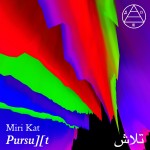Continuiamo nella nostra breve rassegna delle opere recenti di compositori americani più o meno giovani. Il tutto grazie all’esistenza di Art of the States e degli stessi autori che autorizzano la pubblicazione sul sito di alcune opere rappresentative senza ricevere o diritti d’autore, in cambio di una maggiore diffusione. Faccio presente che, mentre in America questa iniziativa viene insignita del premio ASCAP, in Italia, grazie alla presenza dell’omnicomprensiva SIAE e alla lungimiranza degli editori, una cosa del genere sarebbe ben difficile da fare.
Oggi ci occupiamo di Lewis Nielson (che giovane non è, essendo nato nel 1950) e di una sua composizione per orchestra del 2005, chiamata St. Francis preaches to the birds.
Lewis Nielson’s compositional influences include the music of Luciano Berio, Edgard Varèse, and Iannis Xenakis. He is also heavily influenced by a wide range of philosophers including Edmund Husserl, Karl Marx, and Ludwig Wittgenstein, as well as painting, poetry, and film.
Grants and awards for Nielson’s music include the Cleveland Arts Prize, Delius Trust, Groupe de Musique Expérimentale de Bourges in France, Ibla Foundation of Italy, International Society of Bassists, Meet the Composer, and National Endowment for the Arts. Nielson taught for 21 years at the University of Georgia in Athens, and since 2000 he has been on faculty at the Oberlin Conservatory of Music, where he is director of the composition division. His work is recorded on the aca Digital, Albany, Capstone, Centaur, innova, and MMC labels.
Di questo brano l’autore scrive
“The piece is one long phrase. The single ‘phrase’ is kept in motion (perhaps suspension is a better word) through layering and elision of material within the layers … [There is a] gradual transformation from pitched, to less-pitched, to essentially non-pitched material in the solo violin part which, in turn, radiates in widely varying and sometimes very surprising ways throughout the sub-groupings and ‘sections’ of the ensemble.
“The piece is also like a funnel, or thresher, collecting seemingly disparate material, combining it and recombining it, turning one kind of music into another, winnowing out some aspects of an idea and transforming it into something new, resulting a continuous overlapping of ideas … Alternately in support and in contrast to the solo violin music, the other instruments also make musical contributions of their own, even in the act of assimilating or transforming themselves in light of what the soloist provides.
“Two general concepts govern structural growth: communication (or lack or inability thereof) between the soloist and the various ‘sections’ of the ensemble … and transformation of musical material within and between instruments and sections. The work is a long conversation among many individuals and groups, aiming less for a convenient sense of dialogue or dependent relationship between soloist and the rest than for the maintenance of a balance within the various musical ‘languages’ generated. […]
“While I do not intend any kind of direct correlation, the actual legend of St. Francis and his sermons to the birds … can provide, by way of analogy, some approaches to the workings of the piece and some various ways to listen to it … Whether or not one believes other aspects of the St. Francis legend, it’s clear that he sought to hold the birds’ attention, and that they were as eager to understand him as he them. Equally, as he listened to them he took away knowledge of a kind that resists codification while being very meaningful to him. […]
“It will be noted that the work concludes in an unusual manner: to wit, with the soloist leading the ensemble and the conductor seated, playing celesta with the percussionists. Besides making an historical ‘tip of the hat’ to the original leadership functions of the Baroque solo concerto, the soloist at the end embodies the catalytic and transformational agent he has been all along. […]
- Lewis Nielson – St. Francis preaches to the birds (2005), per orchestra
J Freivogel, violin, Oberlin Contemporary Music Ensemble. Timothy Weiss, conductor


 Continuiamo nella nostra breve rassegna delle opere recenti di compositori americani più o meno giovani. Il tutto grazie all’esistenza di Art of the States e degli stessi autori che autorizzano la pubblicazione sul sito di alcune opere rappresentative senza ricevere o diritti d’autore, in cambio di una maggiore diffusione. Faccio […]
Continuiamo nella nostra breve rassegna delle opere recenti di compositori americani più o meno giovani. Il tutto grazie all’esistenza di Art of the States e degli stessi autori che autorizzano la pubblicazione sul sito di alcune opere rappresentative senza ricevere o diritti d’autore, in cambio di una maggiore diffusione. Faccio […] Continuiamo nella nostra breve rassegna delle opere recenti di compositori americani più o meno giovani. Il tutto grazie all’esistenza di Art of the States e degli stessi autori che autorizzano la pubblicazione sul sito di alcune opere rappresentative senza ricevere o diritti d’autore, in cambio di una maggiore diffusione. Faccio […]
Continuiamo nella nostra breve rassegna delle opere recenti di compositori americani più o meno giovani. Il tutto grazie all’esistenza di Art of the States e degli stessi autori che autorizzano la pubblicazione sul sito di alcune opere rappresentative senza ricevere o diritti d’autore, in cambio di una maggiore diffusione. Faccio […]
Lascia un Commento